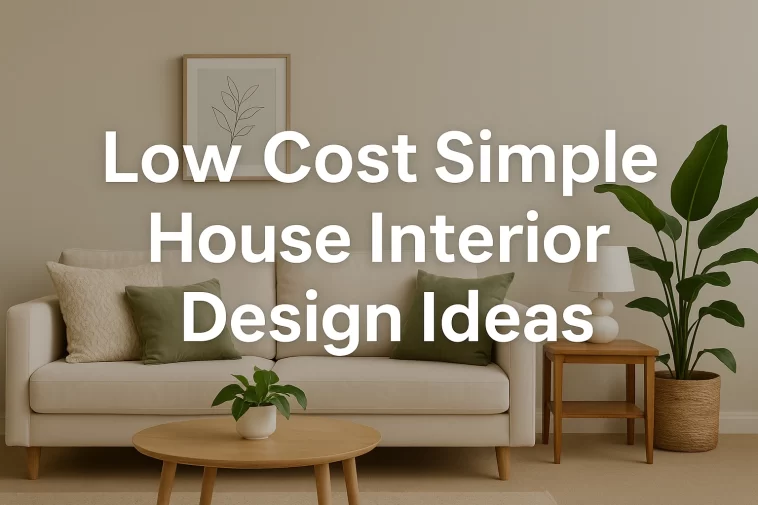Designing a beautiful home does not have to be expensive. With thoughtful choices, clever planning, and some DIY spirit, you can turn any house into a comfortable, stylish home without breaking the bank. This article covers practical, low cost interior design ideas that are easy to implement, look great, and last. Whether you rent or own, whether your space is small or large, these ideas will help you refresh your home on a tight budget.
We cover room by room tips, paint and color strategies, affordable materials, lighting, storage hacks, furniture choices, and small projects that deliver big results. Read on for a complete roadmap to affordable home design that feels personal and polished.
Why low cost interior design works
Good design is about making the most of what you have. Instead of buying expensive items, low cost design focuses on three principles:
- Function first. A well functioning space feels better and looks better.
- Smart focal points. One or two well chosen elements can lift the whole room.
- Quality where it matters. Spend a little more on things that wear out or are used daily, and save on accessories.
When you use these ideas, your home will feel cohesive and intentional without a high price tag.
1. Start with a simple plan
Before buying anything, make a plan. Walk through each room and answer three questions:
- Who uses this room and how?
- What is the main function of the room?
- What one change would most improve the space?
Measure the rooms and note window and door locations. A simple plan stops impulse buys and helps the budget stretch further.
2. Paint smart to transform any room
Paint is one of the biggest bargains in interior design. A fresh coat changes mood, brightens light, and hides wear.
- Choose light neutral colors for small rooms to make them feel larger. White, warm beige, or soft grey work well.
- Use a bold accent wall for impact. Paint one wall in a living room or bedroom in a deep color to create a focal point without painting the whole room.
- Use washable, durable paint for high traffic zones like kitchens and hallways so maintenance is easy.
- If you are renting, use removable wallpaper or temporary peel and stick decals for pattern and texture without permanent change.
A DIY paint job is affordable and gives the quickest transformation for the least cost.
3. Maximize natural light and add layered lighting
Natural light makes spaces feel more open and welcoming.
- Keep window treatments light and translucent to let daylight in. Use sheer curtains or light blinds.
- Position mirrors opposite windows to reflect light and visually double the daylight.
- Add layered lighting: ambient lighting from a ceiling fixture, task lighting near reading or kitchen areas, and accent lighting for mood. Table lamps and floor lamps are budget friendly and easy to move around.
Good lighting improves color, mood, and the perceived value of a room.
4. Choose multifunctional furniture
For a small budget, every piece should earn its keep.
- Pick furniture that offers storage, such as ottomans with hidden compartments or beds with drawers.
- Use nesting tables or folding tables for flexible use. They save space and can be stored when not needed.
- Buy modular or second hand pieces that can be reupholstered or painted later.
Multifunctional furniture reduces the need for multiple purchases and keeps the room uncluttered.
5. Smart storage solutions that look good
Clutter quickly makes even the nicest space feel messy. Affordable storage solutions make a huge difference.
- Wall mounted shelves use vertical space and add a design element. Stagger shelves to display books, plants, and photos.
- Use baskets and boxes for loose items. Natural fiber baskets hide clutter while adding texture.
- Install floating bedside shelves to avoid buying bulky nightstands.
- Under bed storage is ideal for linens and seasonal items.
Organized storage makes rooms feel larger, cleaner, and more intentional.
6. Use textiles to add warmth and style
Textiles are affordable and instantly update a room.
- Add cushions and throws to sofas and beds. Choose complementary colors and textures.
- Use an area rug to define a seating area. Rugs are available at many price points and can change a room’s feel.
- Swap curtains seasonally or pick an all season fabric with neutral tones.
Textiles are where small budgets can have a big visual impact.
7. Affordable flooring updates
New flooring can be costly, but there are budget friendly options.
- Vinyl plank flooring mimics wood and is water resistant and affordable. It is easy to install as a floating floor.
- Laminate flooring is another cost effective choice for a wood look.
- For renters or those on a tight budget, large area rugs over existing floors can change the look instantly.
Choose flooring in neutral tones to complement multiple decorating styles and last longer.
8. Refresh kitchen and bathroom details
Kitchens and bathrooms are high impact areas. Small changes can feel like a full renovation.
- Replace cabinet handles and drawer pulls for a new look. Hardware is inexpensive and easy to replace.
- Apply contact paper or paint to cabinet fronts for a fresh finish. Use clear instructions and proper primer for lasting results.
- Upgrade faucets and showerheads using mid range fixtures that deliver better aesthetics and water efficiency.
- Add open shelving for frequently used items and display matching containers.
A few small updates make these rooms feel modern and well cared for.
9. Use plants and greenery strategically
Plants are inexpensive design tools that add life to any room.
- Choose low maintenance plants like snake plant, pothos, or ZZ plant if you lack regular care time.
- Group plants of different heights for a curated look.
- Use hanging planters for small spaces and window sills.
Plants improve air quality and bring welcome color and texture to simple interiors.
10. Mix new and second hand for character
Buying everything new is expensive. Mixing thrift finds with carefully chosen new pieces is both budget smart and stylish.
- Scout local thrift stores, flea markets, and online marketplaces for unique pieces. A good vintage mirror, lamp, or console can be a strong focal point.
- Refinish or repaint thrift furniture for a fresh look. Sanding and a new coat of paint or stain transforms inexpensive finds.
- Buy key new items where quality matters, like a mattress or sofa, and save on accessories.
This mix creates a layered, well curated home.
11. Create strong focal points
A single striking element can lift a whole room.
- A gallery wall of photos or prints draws the eye and personalizes the space. Use uniform frames for cohesion.
- A statement light fixture over the dining table or living room adds design interest.
- A feature wall in textured paint or wallpaper adds depth and drama without cost of full renovation.
Focus on one or two focal points per room for the best visual return.
12. Small DIY projects that add value
DIY projects save money and also make the home feel personal.
- Build simple floating shelves from affordable timber.
- Make your own cushion covers using fabric offcuts.
- Create custom art using simple frames and printed photos or botanicals.
- Repaint old furniture for a bespoke finish.
DIY projects are budget friendly and deliver a satisfying design impact.
13. Color and pattern rules for cohesion
A simple, cohesive palette makes a home feel designed.
- Choose a base palette of two neutrals and one accent color. Use the accent sparingly.
- Repeat colors in different rooms to create flow. A rug or cushion color echoing a painting unifies a space.
- Use patterns in small doses, like cushions or curtains, rather than on large surfaces.
A unified color strategy stops rooms from feeling disjointed.
14. Low cost window treatment ideas
Window coverings affect light and privacy.
- Use simple roller blinds for a clean look that is affordable.
- Layer a sheer curtain with a heavier curtain for privacy and softness.
- Attach curtains close to the ceiling to make windows appear taller and rooms larger.
Window styling is a small investment that makes a big visual difference.
15. Energy efficient and low maintenance choices
Low cost design is smarter when it saves money in the long run.
- Use LED bulbs to save energy and get durable lighting.
- Choose washable textiles and durable finishes for high traffic areas.
- Select water efficient faucets for kitchen and bathroom to reduce utility bills.
Sensible choices reduce ongoing costs and support sustainable living.
16. Avoid common budget design mistakes
Some mistakes waste money. Learn to avoid them.
- Do not buy cheap furniture that will fall apart quickly. Spend a bit more on items that will be used daily.
- Avoid matching everything exactly. Uniformity can feel bland. Mix textures and finishes.
- Do not overfill a room. Space and breathing room are part of good design.
Smart purchases and restraint deliver long term value.
Below are some Low Cost Simple House Interior Design Ideas
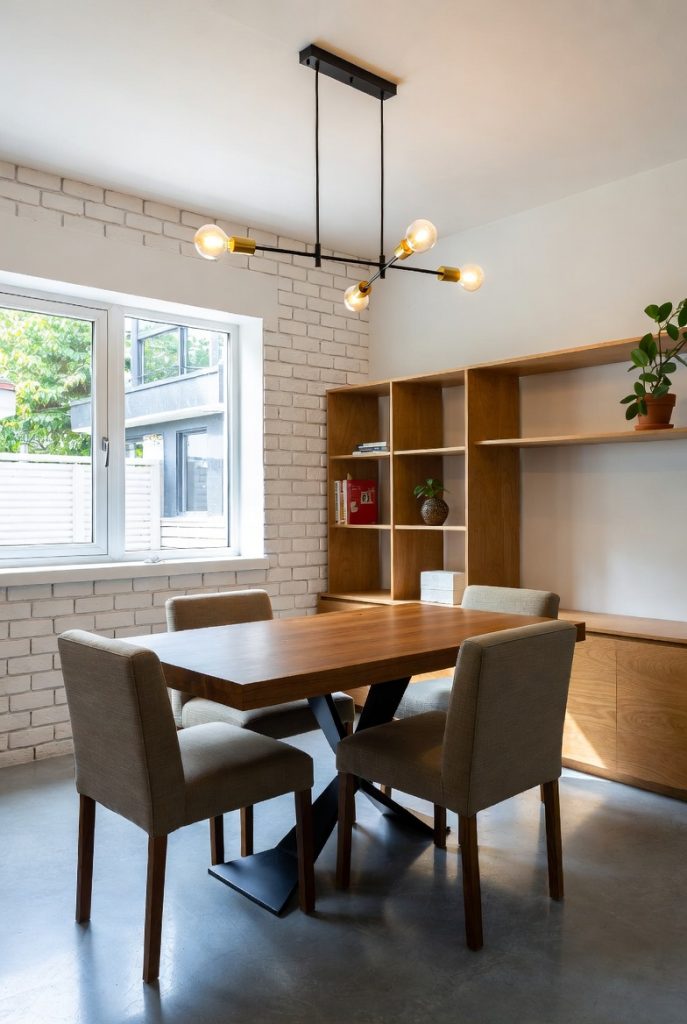

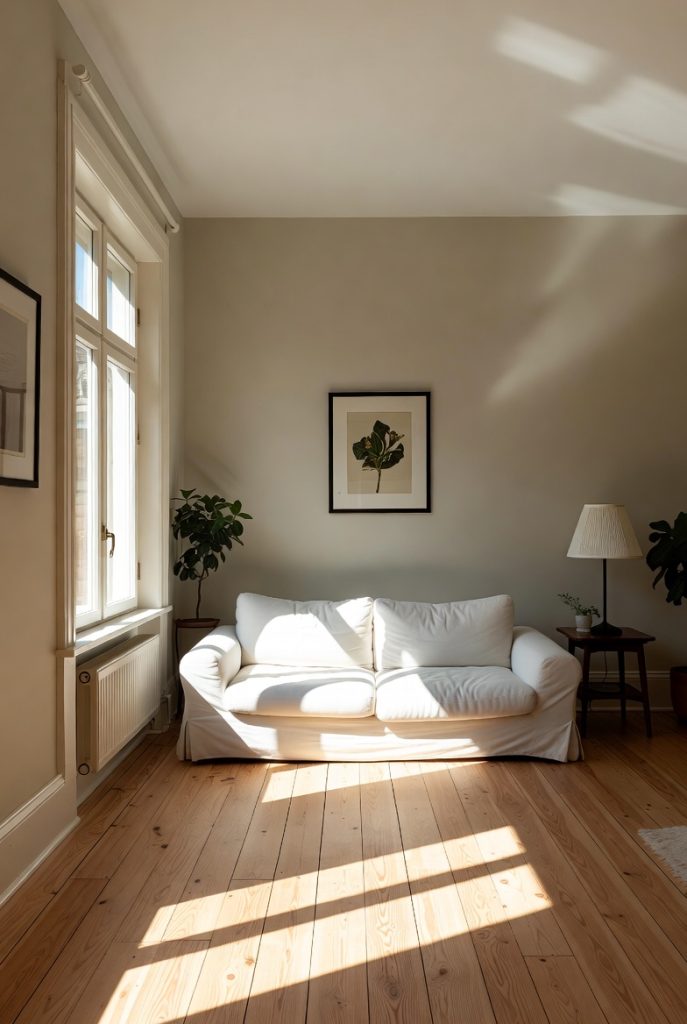

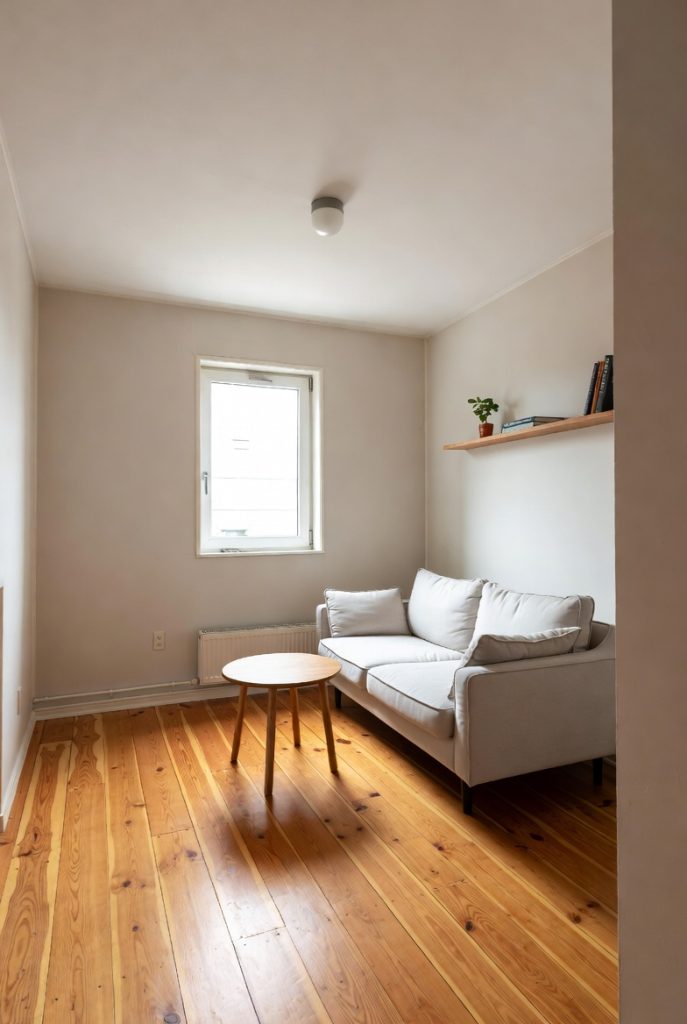


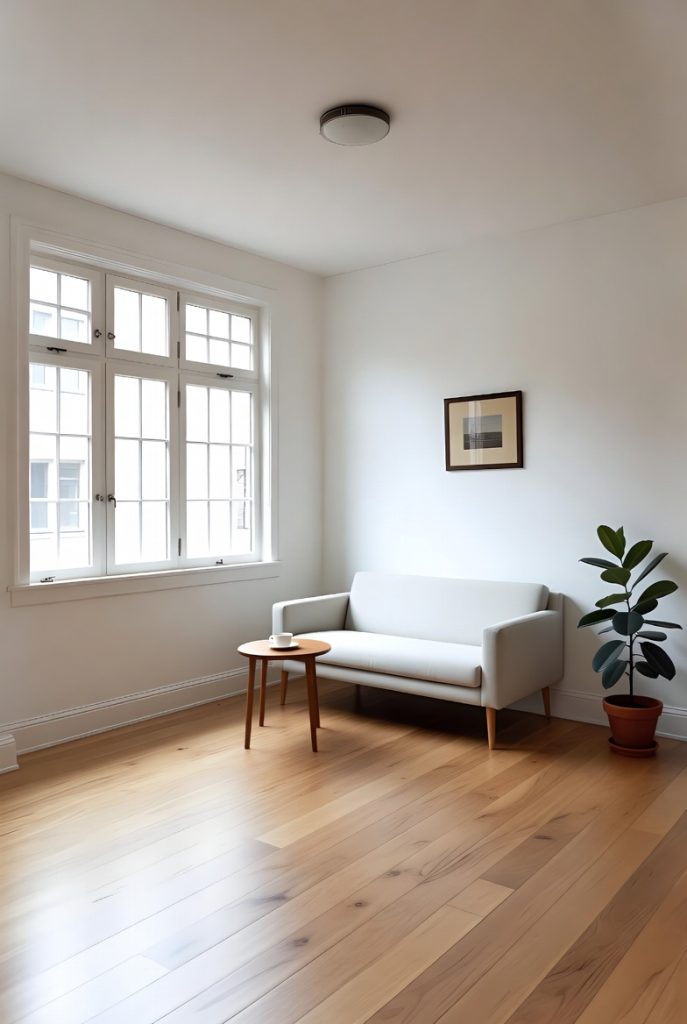



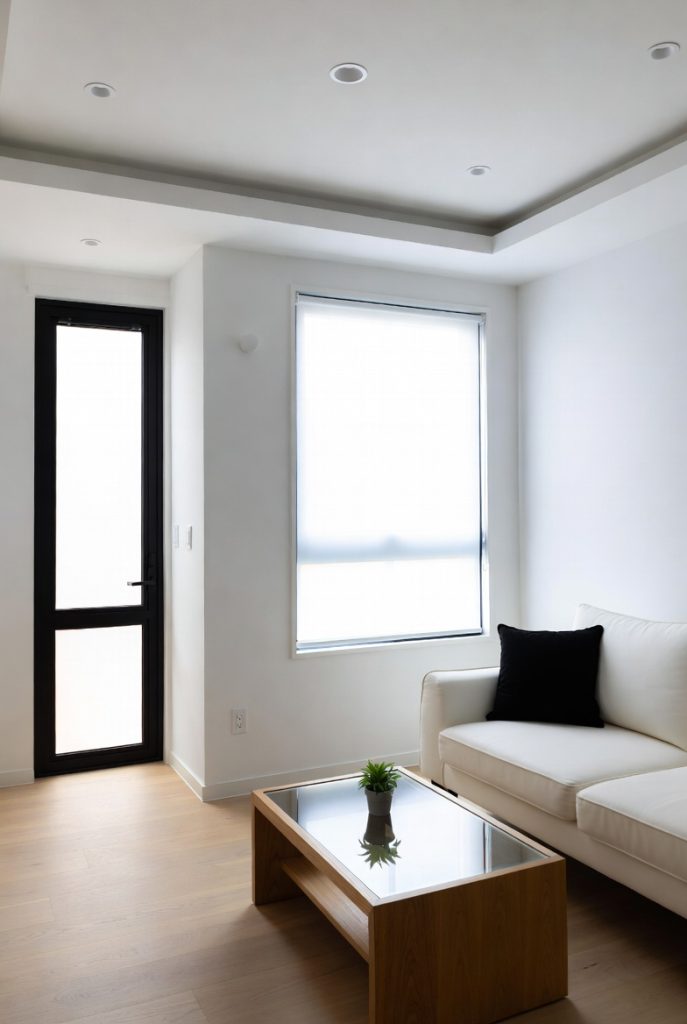
FAQs – (Frequently Asked Questions)
Q1. How much does low cost interior design typically cost per room
Costs vary by city and materials. A basic refresh using paint, textiles, and small furniture changes can start from a few thousand rupees for a single room. Larger changes like flooring or built in storage will cost more. Plan by prioritizing impact items first.
Q2. Can renters redecorate without losing the deposit
Yes. Use non permanent options like peel and stick wallpaper, removable hooks, and rugs. Avoid drilling holes or altering built in fixtures unless you have landlord permission.
Q3. Are second hand furniture pieces hygienic and safe
Yes if chosen carefully. Check for structural soundness, pests, and wear. Clean and, if needed, reupholster with new fabric.
Q4. How do I choose the right size rug
A rule of thumb is to keep the front legs of sofas and chairs on the rug in a seating area. For dining tables, allow at least 60 cm of rug beyond the table on each side for chairs to move comfortably.
Q5. Which plants are best for low light homes
Low light friendly plants include snake plant, ZZ plant, pothos and peace lily. They are tolerant of lower light and require less frequent watering.
You Might Also Love This:
Conclusion:
Low cost simple house interior design is all about making smart choices. You do not need a big budget to create a home that feels warm, stylish, and functional. With a clear plan, a focus on key focal points, smart paint and lighting choices, and a blend of new and thrifted pieces, you can transform any space affordably. Start small, prioritize needs, and enjoy updating your home in ways that reflect personal taste and practical living.


